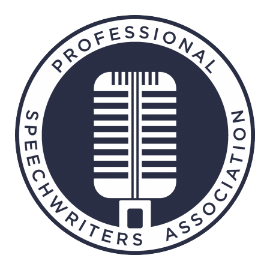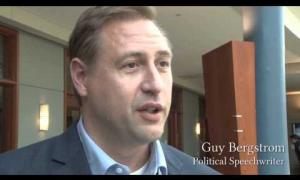Executive podcasting: how to make it work
January 04, 2010
Hewlett-Packard executive communicator Ian Griffin knew he had a good podcast candidate on his hands: Nora Denzel, a popular senior vice president with a winning personality.
But Griffin, who has since left H-P and struck out on his own, recently explained to TIE that he went through some trial-and-error before he found a friendly format for Denzel (who is now with Intuit).
His story is instructive for executive communicators everywhere — and may save you a few (mis)steps.
- How to turn a person into wood. For the first couple of podcasts. Griffin took Denzel into the company’s TV studio, and surrounded by audio techs she read from a script in a black room. The sound was perfect, but Denzel was flat and the podcast was airless.
- Better. Next, Griffin took a high-tech Marantz 650 recorder — it’s about the size of a big hardback book, Griffin says—and interviewed Denzel in her office. This was all right, Griffin says, “but there was still a microphone pointed at her.”
- Best. Finally, Griffin hit on the idea of having Denzel conduct conversations with people who reported to her who had launched a new product, completed an initiative or created a campaign. She held the conversation without Griffin in the room. He dialed into the call via an 800-number conference call, put it on speaker and simply held the recorder next to the speaker. That method yielded a compelling podcast almost every time.
“What we learned was that sound quality isn’t as important” as authenticity and spontaneity.
The corporate urge to control is the real trouble with executive podcasts —and with blogging for that matter —so step one is finding an executive who’s willing to experiment, and to put her or his name on a product that’s more real than slick.
Griffin loves talking about podcasting almost as much as he loves to do it on his blog. Reach him at [email protected].
Podcasting 101: A primer for executive communicators
Speechwriter and relative-veteran podcaster Ian Griffin recently podcasted about podcasting. He explained the three-step process: recording, editing and publishing.
- Recording. You need a digital tape recorder, around $100 at Radio Shack. This device works for phone interviews too. Just use a speaker phone, hold tape recorder close.
- Edit. You need to choose an editing program to edit raw sound into a concise and continuous podcast, add intro music and voiceover, and outro. Griffin uses Audacity, which is free; If you’re on a Mac, GarageBand is the choice. There will be a learning curve with these packages, Griffin warns; expect to invest a couple of evenings in figuring out basics.
- Publish. “This is where it gets a little complicated,” Griffin says. He uses the WordPress blogging package — not wordpress.com, but wordpress.org.
When you do a blog post, you can just say “Add Media File,” you give it a name, and it puts it up. WordPress automatically puts it on iTunes.
The whole process, the way Griffin does it, is free — except for the $100 for digital recorder.


